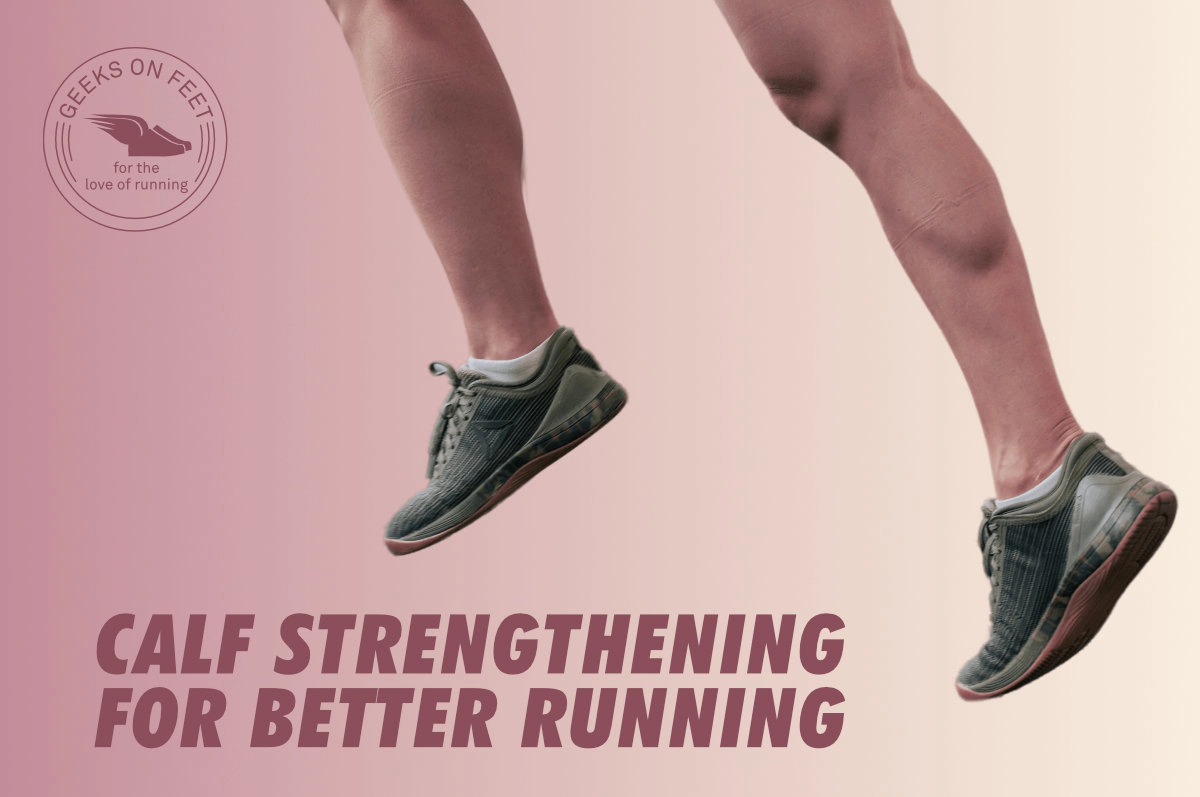
The posterior chain muscles Glutes, Hamstrings, and Calf muscles are very important in creating the force needed to run. It is well known that strengthening the gluteal muscles can prevent injuries and enhance performance for runners. Calf muscles, however, are often overlooked. The calf muscles are mainly composed of Gastrocnemius, Soleus, and Tibialis posterior muscles. These muscles are attached to Achilles' tendon.
In this article, we go into the details of
Calf muscles play their role through the running gait cycle.
Calf muscles play an even more important role in uphill and downhill running. They help with better ankle extension for uphill running while taking the load through eccentric contraction along with the quadriceps.
Weak calf muscles mean reduced ankle mobility and stability, and this is often the cause of common foot injuries such as Achilles Tendonitis and Plantar Fasciitis. Thus the strengthening of calf muscles becomes important to keep these injuries at bay.
Weaker engagement of calf muscles is often associated with rear-foot strike running pattern. That leads to overuse of anterior tibialis muscles and also is often the reason for shin splints.
It is also common to see mid-foot and fore-foot strikers switch to heel-strike towards the later part of the longer runs. Ever noticed it? It is because of the fatigued calf muscles.
Also, ever noticed, calf muscles are the first to give away and often the first to cramp during marathons? Contrary to popular belief, cramps are more commonly caused by fatigued calf muscles than electrolyte imbalance.
Prioritizing the strengthening of calf muscles and their mobility should be a vital part of every runner’s routine.
#WoW
The following are selected workouts of #WoW (Workout of the Week) column from our weekly newsletter. You can subscribe here to get these weekly running specific workouts delivered to your email.
The calf Raises drill is one of the easiest exercises to perform. It has two variations. The first variation involves calf raise from the flat heel position. The second variation includes calf raise with a heel-drop.
Calf Raises helps runners in multiple ways. At a basic level, it helps strengthen calf muscles, that includes posterior tibialis. The posterior Tibialis plays an essential role in controlling the foot arch, hence calf-raises are a good drill to build a strong foot arch and control pronation and foot stability. The second variation includes heel-drop also helps in stretching the calf, ankle & plantar, and adds further difficulty to Calf Raises.
How to do it?
This drill needs a step and support of a wall or railing
When to do it?
Do it twice a week with 20 to 30 repetitions as part of your strength training. Once you are used to doing it with both legs; try doing it with only one leg while the other leg is taken off the ground.
Bent Knee Calf Raises, is a variation that particularly works on strengthening soleus muscles.
How to do it?
To be effective this workout is done using external weights.
When to do it?
It is ideal to include it as part of your strength training routine. 3 sets of 20 reps on each side is a good starting point.
Single-leg hops is a plyometric drill that helps in developing power, simultaneously improving our balance & stability. This exercise helps in coordination between ankle extension, knee extension, and the firing of glutes to optimize power and balance.
How to do it?
This exercise does not need any props and can be done anywhere. Go back to your childhood memories, we all have played this at some point in time.
When to do it?
You can do this once or twice a week as part of your warm-up drills or your strength training sessions. If you have balance & stability issues, we recommend it daily in the short-term.
Foam rolling is one of the most important and easy ways to improve mobility, release trigger points, and relieve muscle soreness. As runners, we all know this and yet at times ignore it or do not know the correct way of doing it.
The gastrocnemius and soleus muscles that make up our calf muscles play a super important role in running. The calf muscles are responsible for plantarflexion of the foot and ankle and control foot pronation. They produce the majority of the force during the last stage of push-off. It is natural that they get sore after running and get tight over time. Many injuries at the ankle and heel in the lower leg begin with tightness in the calf muscles.
Foam-rolling calves will not only release the tightness (helps to recover faster) and it helps in minimizing common running injuries.
How to do it?
When to do it?
Incorporate this into your mobility work, for 5 minutes.
Courtesy: Team Run Mechanics. This article was first published on runmechanics.in
If you are a running enthusiast, follow us on our social media channels @geeksonfeet on Twitter, and GeeksOnFeet on Instagram and Facebook for updates. Also let us know what running topics you would like to read on.